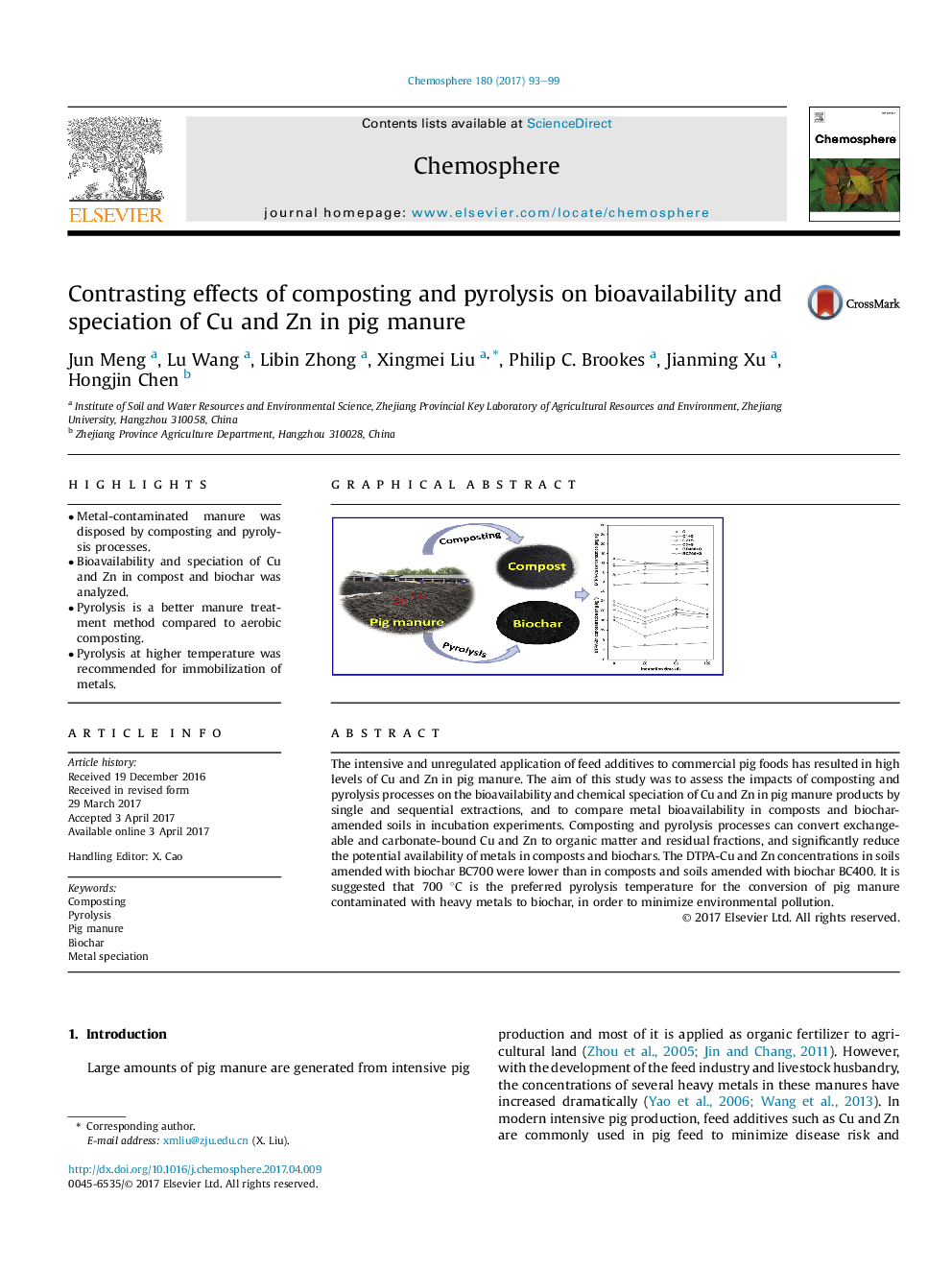| Article ID | Journal | Published Year | Pages | File Type |
|---|---|---|---|---|
| 5746109 | Chemosphere | 2017 | 7 Pages |
â¢Metal-contaminated manure was disposed by composting and pyrolysis processes.â¢Bioavailability and speciation of Cu and Zn in compost and biochar was analyzed.â¢Pyrolysis is a better manure treatment method compared to aerobic composting.â¢Pyrolysis at higher temperature was recommended for immobilization of metals.
The intensive and unregulated application of feed additives to commercial pig foods has resulted in high levels of Cu and Zn in pig manure. The aim of this study was to assess the impacts of composting and pyrolysis processes on the bioavailability and chemical speciation of Cu and Zn in pig manure products by single and sequential extractions, and to compare metal bioavailability in composts and biochar-amended soils in incubation experiments. Composting and pyrolysis processes can convert exchangeable and carbonate-bound Cu and Zn to organic matter and residual fractions, and significantly reduce the potential availability of metals in composts and biochars. The DTPA-Cu and Zn concentrations in soils amended with biochar BC700 were lower than in composts and soils amended with biochar BC400. It is suggested that 700 °C is the preferred pyrolysis temperature for the conversion of pig manure contaminated with heavy metals to biochar, in order to minimize environmental pollution.
Graphical abstractDownload high-res image (367KB)Download full-size image
